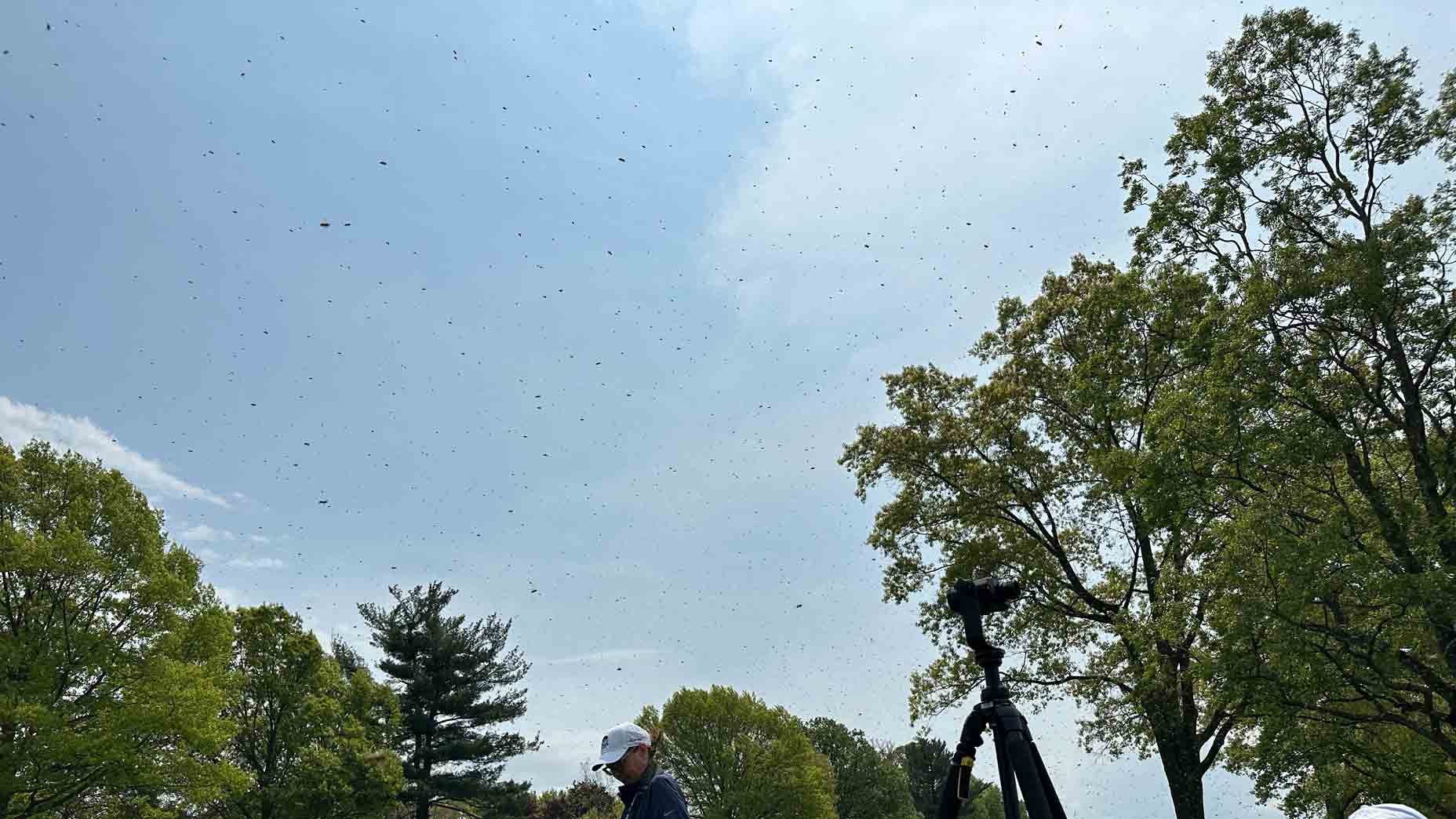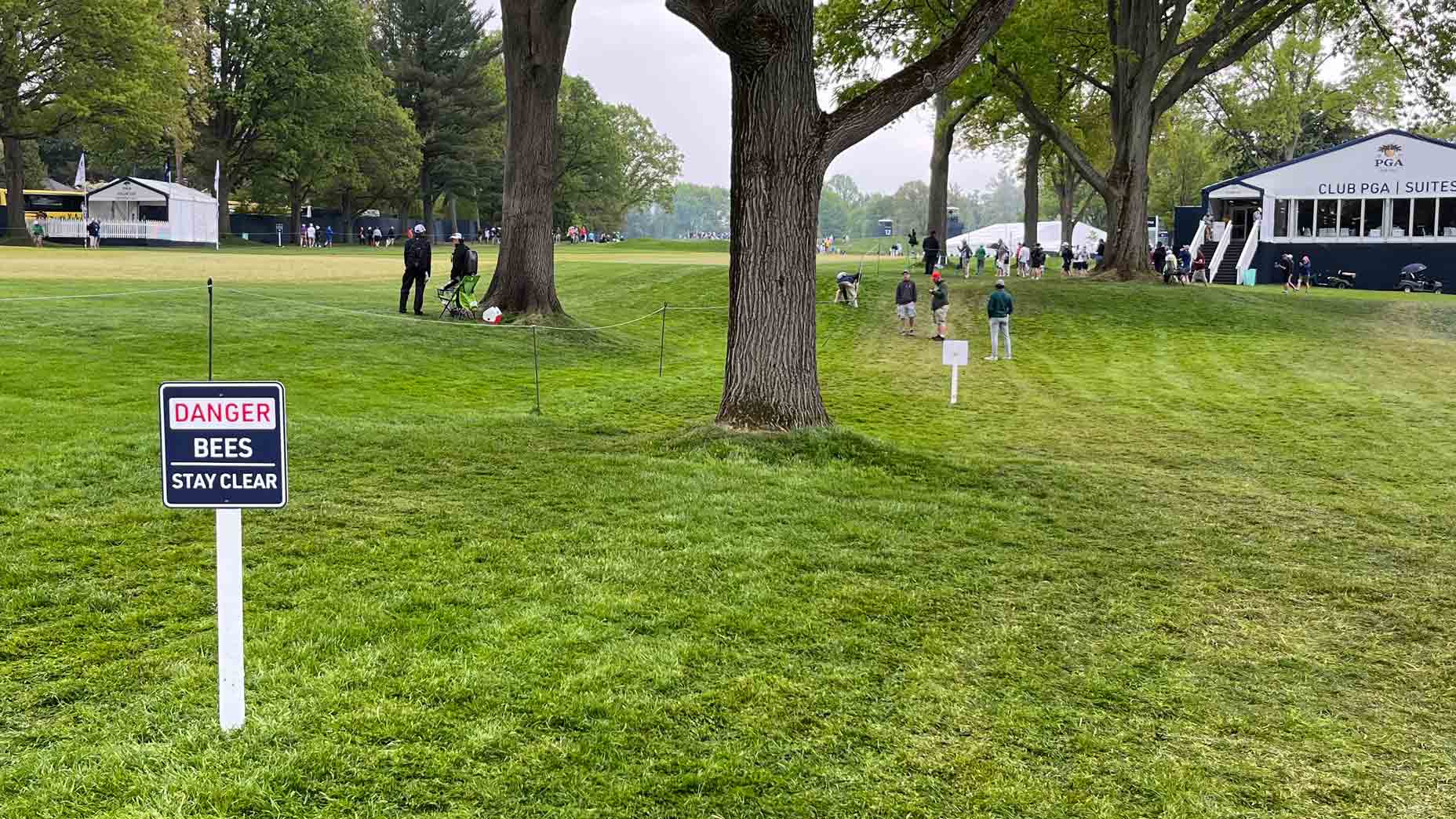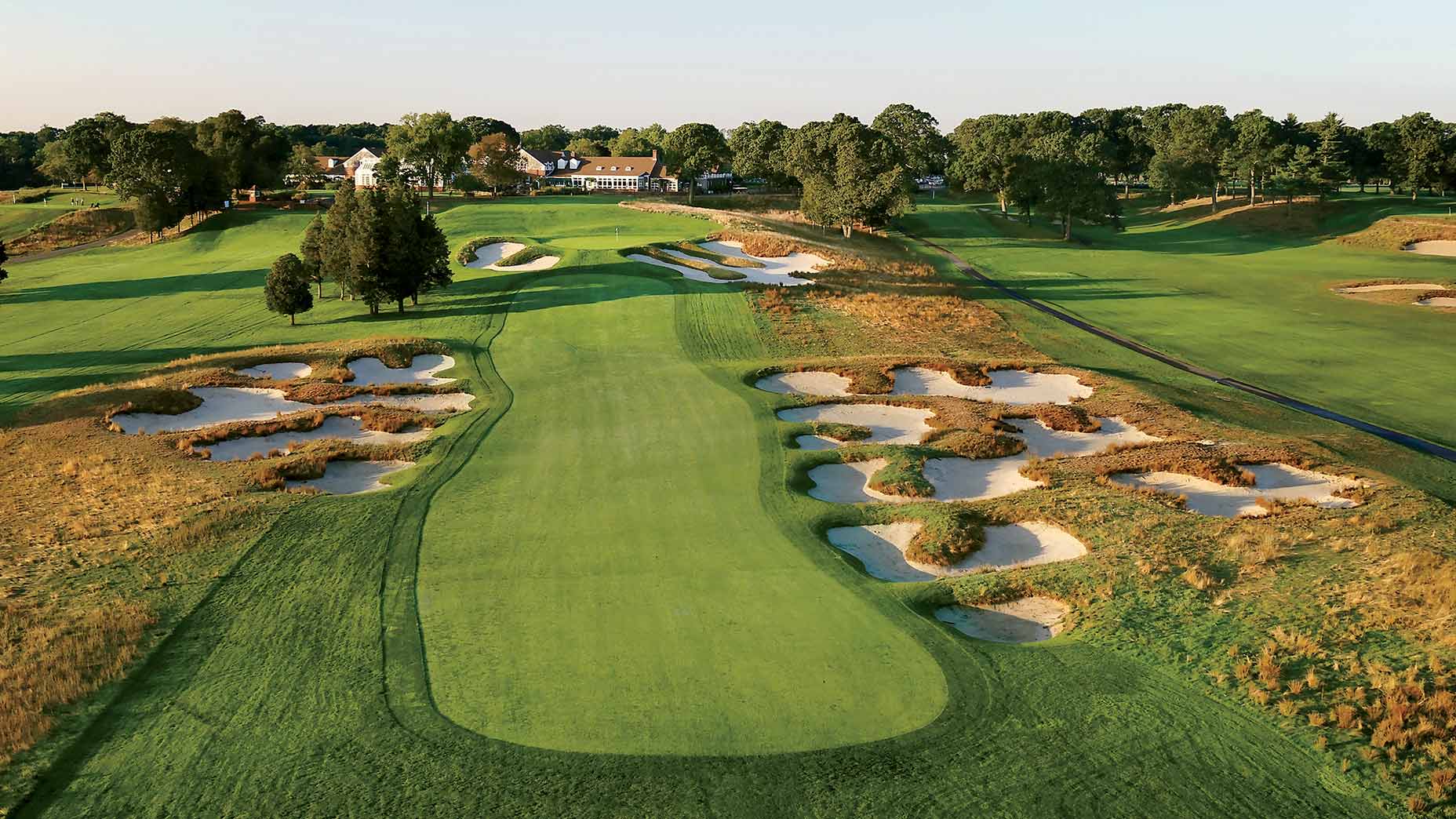ROCHESTER, N.Y. — Zach Johnson, you’re a brave, brave soul.
It was Johnson, after all, who muscled out his third shot on Friday afternoon on the par-5 4th hole at Oak Hill Country Club from a spot in the left rough about 160 yards out. About a half-hour later during the PGA Championship’s second round, the U.S. Ryder Cup captain was back in the same area, this time after his tee shot on the adjacent 6th hole. Both times, he was about a first down or two away from a blue sign with red and white letters. And that sign read this:
“Danger.
“Bees.
“Stay clear.”

Above the sign, about 30 feet in the air and hanging ominously from a tree was a nest filled with the offenders. Technically, they were hornets. A volunteer on the hole had the picture [above] as proof.
Bill Sachman had taken it at about 1 p.m. — when a couple hundred left the nest and played the 4th and 6th for about a half-hour.
“Oh it swarmed earlier,” said Jim Sparks, another volunteer on the hole. “We were literally all on the ground like this. [He squatted down.]”
How they were awoken wasn’t clear — neither volunteer had seen them during the first round, and a GOLF.com reporter hadn’t spotted any earlier in the week — but no one was stung, the volunteers believed. A short while after the attack, two signs were posted by officials — one about 145 yards away from the 4th pin, and the other a little farther back, from near where Johnson hit both times — and Sachman said he thought the nest could be cut down Friday night.
There are some golf questions here, though. Let’s start with the rules.
Yes, a player can get relief. That’s covered under under Rule 16.2, which partially reads:
“A ‘dangerous animal condition’ exists when a dangerous animal (such as poisonous snakes, stinging bees, alligators, fire ants or bears) near a ball could cause serious physical injury to the player if he or she had to play the ball as it lies. A player may take relief under Rule 16.2b from interference by a dangerous animal condition no matter where his or her ball is on the course, except that relief is not allowed:

“When playing the ball as it lies is clearly unreasonable because of something other than the dangerous animal condition (for example, when a player is unable to make a stroke because of where the ball lies in a bush), or when interference exists only because the player chooses a club, type of stance or swing or direction of play that is clearly unreasonable under the circumstances.”
And yes, bee attacks have happened before, most recently late last month at the Mexico Open. There, pro Erik van Rooyen saw a swarm approaching, ducked and warned his playing partners and the group’s caddies — “bees, bees, bees, bees, bees, bees, bees!” His playing partners and the caddies also ducked and the insects flew past.
“That’s the most unusual thing I’ve ever seen on the golf course — everybody just hit the deck,” analyst John Cook said on the Golf Channel broadcast at the time. “It’s like a fog of bees that just blew through.”
Indeed. We’ll finish things here with Johnson and his first shot near the nest.
It was unclear whether he saw the sign, or cared about it. But he hit his third shot from the 4th hole from the thick rough, and Johnson’s ball darted into a greenside bunker. He was frustrated. He swiped again at the grass. A healthy divot popped up, landed in between the signs and dropped in front of a kid.
Who picked it up, returned it near the spot and patted it down.
He wasn’t afraid, either.










